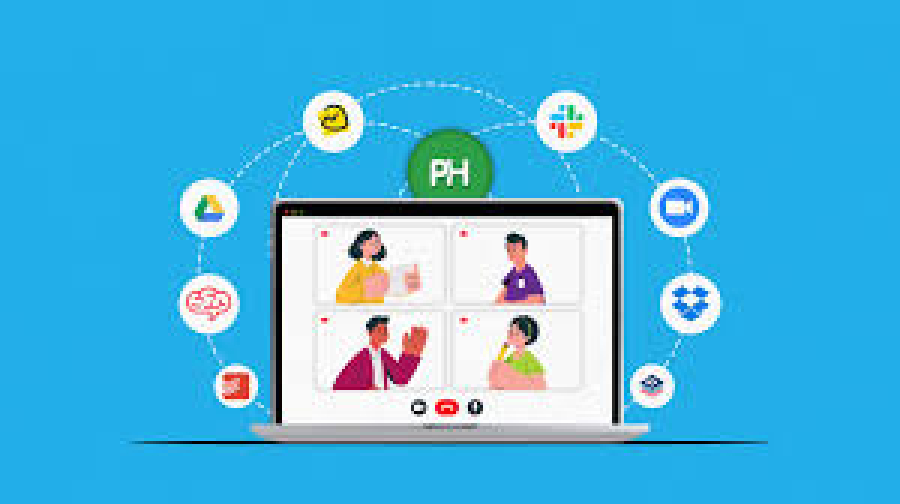FreelancerBridge: Best Practices for Remote Communication
Effective communication is the backbone of successful freelancing. At FreelancerBridge, we understand the importance of maintaining clear and professional communication while working remotely. Whether you’re collaborating with clients or other freelancers, mastering remote communication can significantly impact your productivity and reputation. In this article, we’ll explore the best practices for remote communication, helping you build stronger relationships and achieve better results while working from home or on the go.
FreelancerBridge: Best Practices for Remote Communication
Remote communication is an essential skill for every freelancer. Whether you're coordinating with clients, collaborating with a team, or discussing project details with collaborators, how you communicate remotely can determine the success of your freelance career. Here’s a breakdown of best practices for mastering remote communication and ensuring your professional relationships remain strong:
1. Choose the Right Communication Tools
The first step in effective remote communication is selecting the right tools. There are countless communication platforms, but the key is to choose tools that are reliable, easy to use, and suitable for your specific needs. Platforms like Slack, Microsoft Teams, Zoom, and Google Meet are commonly used for daily communication, project updates, and video calls.
- Tip: Align with your clients or team members to ensure everyone uses the same platform to avoid confusion and missed messages.
2. Set Clear Expectations and Boundaries
Clear expectations about response times, availability, and preferred communication channels are essential in remote work. Set boundaries with your clients or team to avoid burnout. For example, make sure to define your work hours and establish a response time for emails or messages.
- Tip: Let your clients know when you're available for calls or meetings and specify the best times to contact you for non-urgent matters.
3. Be Concise and Clear in Your Messages
In remote communication, it's easy for messages to be misinterpreted. When sending emails or messages, ensure your language is clear and your points are concise. Avoid jargon or long-winded explanations, and get to the point to minimize confusion.
- Tip: Use bullet points, headings, and short paragraphs to make your messages easy to read and understand.
4. Leverage Video Calls for Important Conversations
While email and chat are excellent for quick updates, video calls are the best method for discussing important matters. Video allows you to convey tone, emotions, and body language, which can prevent misunderstandings and help build stronger professional relationships.
- Tip: Use video calls for project kick-offs, client feedback sessions, and final deliverable discussions.
5. Practice Active Listening
Active listening is essential for effective remote communication. When communicating remotely, it’s easy to tune out or miss vital information. Practice active listening by focusing entirely on the conversation, asking clarifying questions, and summarizing key points to ensure understanding.
- Tip: Confirm receipt of messages by repeating or summarizing important details to show you’ve understood.
6. Maintain Regular Check-ins and Updates
Regular communication is essential for staying on top of projects and avoiding any surprises. Set up weekly or bi-weekly check-ins with your clients or collaborators to discuss progress, feedback, and any challenges you may face.
- Tip: Use project management tools like Trello, Asana, or Monday.com to keep track of tasks and communicate progress regularly.
7. Use Professional Language and Tone
In remote work, professional communication is just as crucial as in-person interactions. Ensure your emails and messages are professional, polite, and respectful. This helps maintain strong working relationships and reflects positively on your freelancing business.
- Tip: Avoid using overly casual language, especially with clients or in formal project discussions. Always proofread your messages for grammar and tone.
8. Understand Cultural Differences
If you’re working with international clients or collaborators, it’s important to be mindful of cultural differences in communication styles. Understanding time zone differences, language nuances, and varying attitudes toward formality can help you communicate more effectively across cultures.
- Tip: Research your client’s or colleague’s cultural background to understand the best approach for communication.
9. Use Collaborative Documents for Shared Information
When working remotely, it’s important to keep everyone on the same page. Tools like Google Docs or Notion allow you and your team or clients to collaborate in real-time. This ensures all parties have access to the same information and can make updates or suggestions as needed.
- Tip: Share project documents or meeting notes so everyone has easy access to the latest updates.
10. Be Responsive and Stay Accessible
Finally, being responsive is one of the best ways to demonstrate professionalism in remote communication. Aim to reply to messages within a reasonable timeframe, especially if there are urgent requests or time-sensitive matters.
- Tip: Set expectations with clients on when they can expect a response, but strive to keep your response time reasonable and prompt.


 by Emily
by Emily




